




The national park, extended in 2008, lies on a high mountain ridge that runs west-east from the Laotian border to the East Sea at the Hai Van pass. This ridge interrupts the coastal plain of Vietnam, and, therefore, forms a biogeographical boundary between the faunas and floras of northern and...

Huê ne serait pas la même sans la rivière Huong ou rivière des Parfums et le mont Ngu Binh, qui confèrent à l’ancienne cité des rois un cadre harmonieux et romantique. Une combinaison d’éléments indissociables que savent...

It is a delicate pavilion with a south view. In front of the Pavilion is a large court leading to the Nghinh Luong Pavilion (Pavilion for Fresh Air) on the Perfume River bank.There had once been a tiger - elephant duel on the pavilion grounds in 1829 to entertain Emperor Minh Mang. In his...
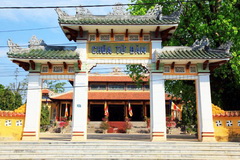
Tu Dam Pagoda was designed following the model of a Conference Pagoda (Chua Hoi). The old and new architectures blend together creating spacious and harmonious elements.Tu Dam Pagoda is one of the biggest and oldest pagodas in Hue. The pagoda was founded at the end of the 17th century (in about...
.jpg)
Établie comme capitale du Viet Nam unifié en 1802, la ville de Huê a été non seulement le centre politique mais aussi le centre culturel et religieux sous la dynastie Nguyên, jusqu'en 1945. La rivière des Parfums serpente à travers la...
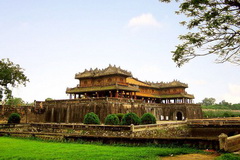
Elle sert d’entrée principale et de façade de la Cité Impériale. Construite en 1833 sous le règne de Minh Mang au moment du ré-aménagement de la Cité. La Porte du Midi constitue un ensemble d’architectures diversifié, elle...
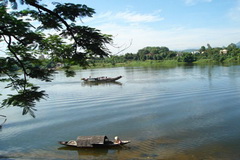
La rivière des Parfums (Sông Hương) tire son nom des nombreuses herbes médicinales qui poussaient sur ses rives. Nombreux villages de sampans avec leurs petits autels et les offrandes sur le toit, à l’intention des génies de l’eau. La...
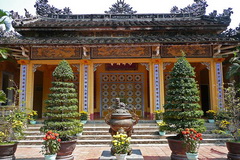
The pagoda includes a main sanctuary with two statues of the Deity Eight Vajra.Dieu De Pagoda was built by King Thieu Tri in 1844 on the platform of 5,000m² in his old residence, where he was born in 1807. It was constructed on a large scale, but was badly damaged during the successive wars....
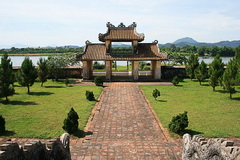
Le temple de la Littérature est un temple confucéen du Viêt Nam, situé sur la rive gauche de la rivière des Parfums à un kilomètre de la pagode de la Dame céleste à l'ouest de la ville de Hué.Sous le règne des...
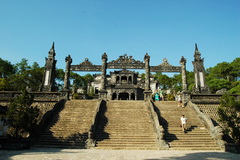
De tous les tombeaux impériaux qui jalonnent la rivière des Parfums, le mausolée de l’empereur Khai Dinh, l’avant-dernier souverain de la dynastie des Nguyên (1802-1945), est le plus étonnant, son architecture étant totalement différente...

Soyez le premier à connaître nos offres de voyage exclusives et les nouveaux circuits !.